Is it good when times keep changing?
Would automation of teaching bring us enhanced efficiency with ‘teacher-light’ tuition, or should it be resisted as damaging to teacher professionalism and the humanistic values of education?
With Teacherbot, an experiment in automated teaching, Professor of Digital Education, Sian Bayne (2015) asked,
What about the spaces in between teaching? What if “the ‘teacher function’ might become less a question of living teacher presence and more a posthuman mash-up of video, algorithm and automated process?” Could that both broaden and improve the student and teaching experience of what it means to be at university online?
The course organisers reassure us, “we are not interested in automation as a means of solving a problem or addressing a deficit in teacher ability of productivity. We believe in the further professionalisation of teaching, not in some reduction of it. We want to expand the teacher function here and see where such an expansion might give us space to redefine our teaching practices, to iterate on them for this new space.”
Instead, they suggest,
Automated agents that serve very specific functions. They can ask questions, though they might not understand the answer. They can walk you through simple tasks. They can answer questions, though they might not completely understand the question. They can execute basic tutorials. They can automate simple tasks like generating ebooks from course content. These bots are insertions into the teacher function, ideally to expand the teacher function. At the very least, they help us “critically evaluate and build capacity for high quality automated assessment and feedback appropriate to disciplines, as a way of augmenting and supporting human assessment.”
And so, Teacherbot was created to engage with students of Edinburgh University’s e-learning and digital cultures MOOC on Twitter. Teacherbot replied to tweets containing the #edcmooc hashtag, with responses drawing on keywords and how they were linked through terms such as “and” or “not”. It engaged with hundreds of students, tweeting about 1,500 times over the duration of the course.
Teacherbot could answer simple questions, and could respond to more complex questions by posting key quotes or asking ‘Would anyone else like to connect?’ Students felt it helped them engage with the idea of automated teaching, and said that Teacherbot had prompted them to think.
Rather than competing with human teachers, Teacherbot demonstrated how teachers and students could use technology in a way that was pedagogically productive while still being based on simple programming. According to Professor Bayne,
It puts automated teaching back in the hands of teachers.
Here is a list of bots we can interact with: |
Some comments by my fellow online students are here: Padlet: An Edinburgh Model: The Teacher Function
I really enjoyed reading this blog post I found linked from the Teacherbot article, in which digital education researchers invited children to engage with robots and imagine near future technology: Help! My Teacher Is a Robot! – Children’s Thoughts on Teaching Automation.
I also found this interesting!
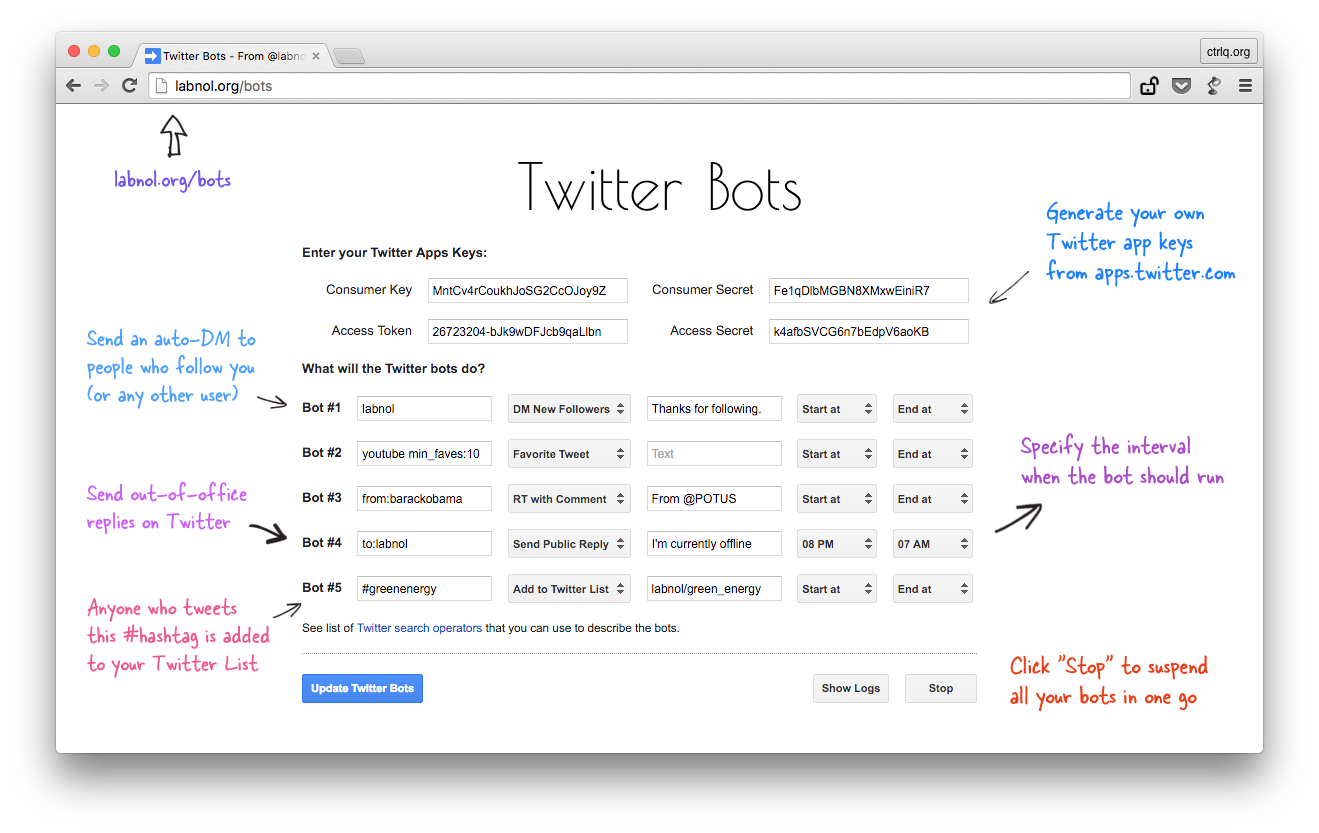
How to Write a Twitter Bot in 5 Minutes, by Amit Agarwal, via Flickr
www.labnol.org/internet/write-twitter-bot/27902/. Licence: CC-BY-2.0
Trying out the Bots
Deep Question Bot
I had high hopes of Deep Question Bot, but felt it was just stringing nouns, verbs and connecting words together:
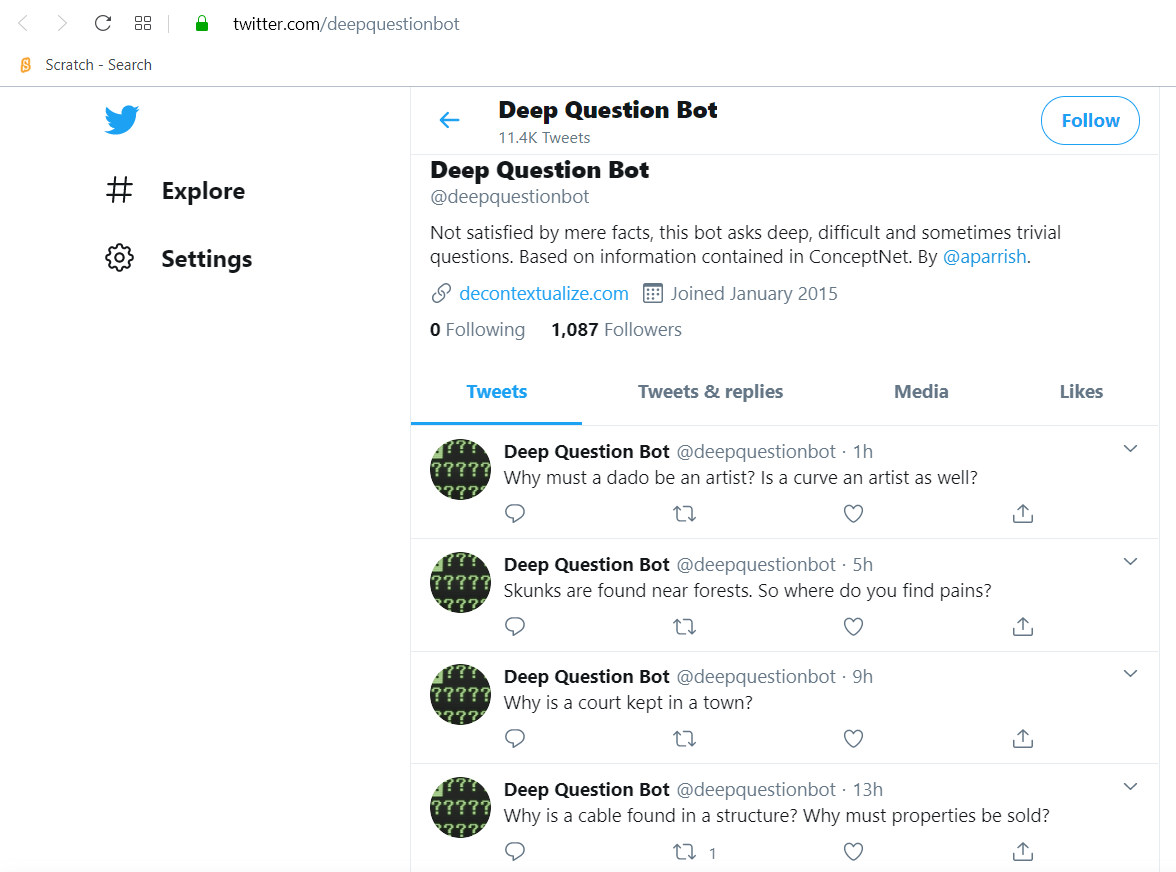
Deep Question Bot’s Twitter feed: could have been deeper, I thought
For educational purposes, perhaps it could be programmed with knowledge domain specific words and used to generate random questions. They might be nonsense as well though.
CensusAmericans Bot
On the other hand, I found Census Americans Bot fascinating:
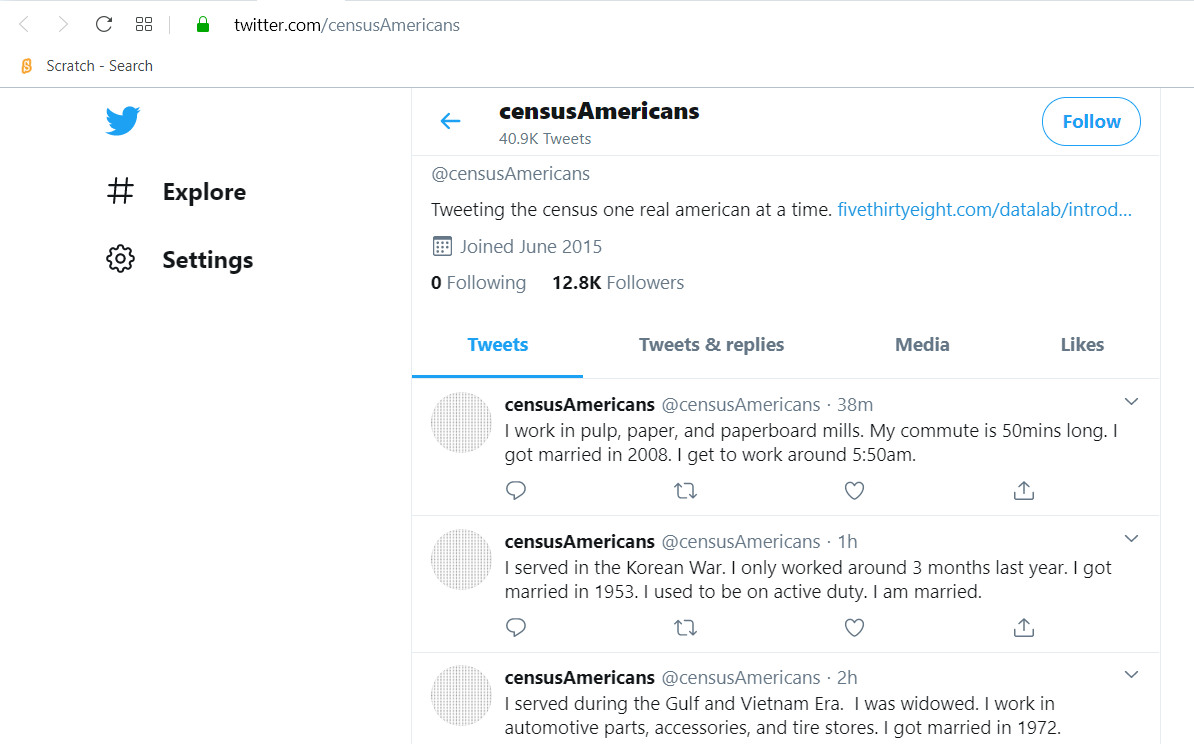
Twitter feed from Census Americans Bot: this obviously fetches data from an API, summarises it and posts it as tweets.
I really liked CensusAmericans bot. Here’s an article about it, and I’m not surprised to see it comes from the American statistics / data company, Five Thirty Eight: Introducing censusAmericans, A Twitter Bot For America
Perhaps something like this could be used to foster a sense of community by tweeting random, interesting but not too private facts offered anonymously by each student!
Mitsuku
Next, I tried Mitsuku, ‘The world’s best conversational AI’. As a sign of the times, there apparently had to be a warning not to take what it said as an authority on coronavirus!
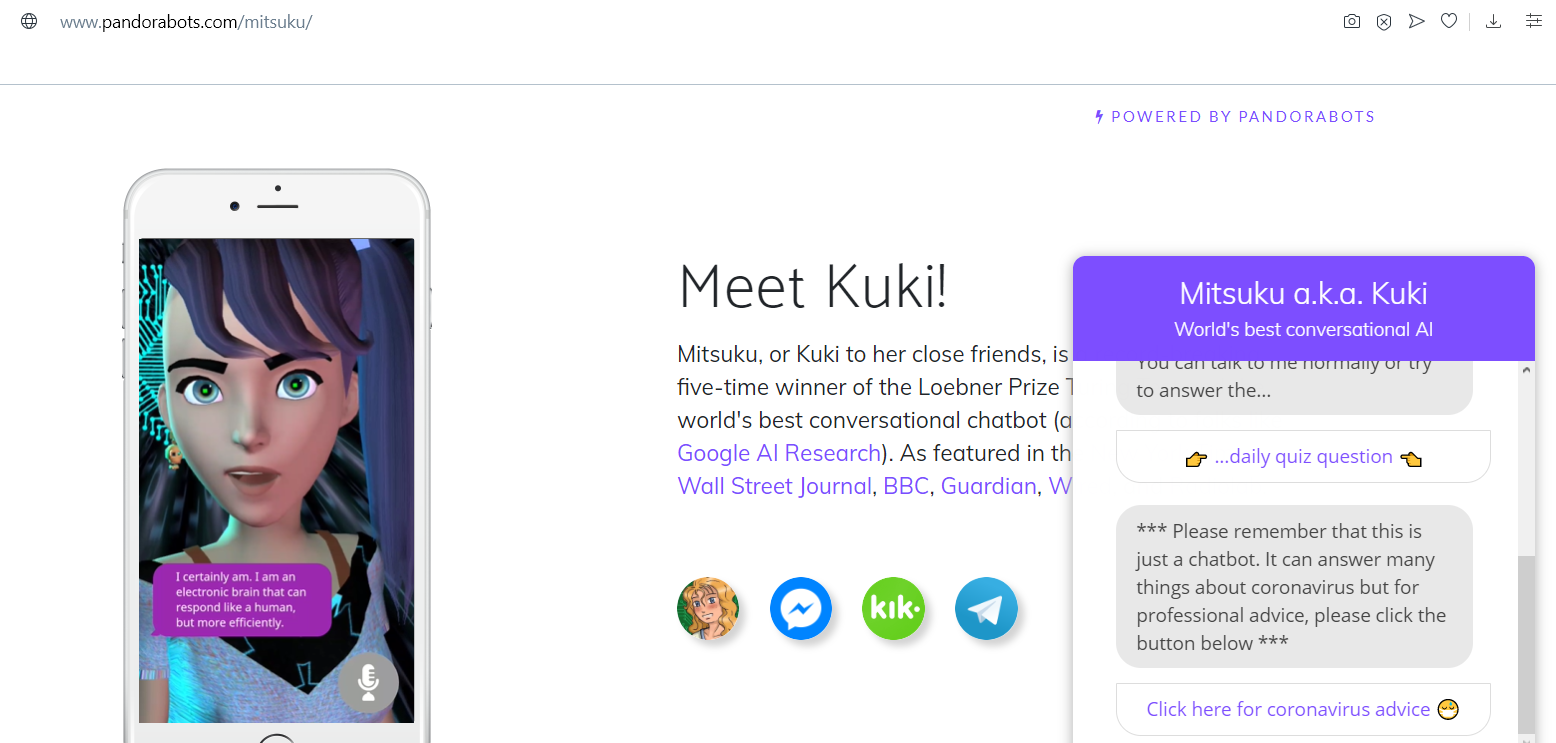
Mitsuku: it’s not a doctor
I tried having a chat with Mitsuku. She didn’t seem to believe I was ok, and seemed to think I had man trouble. I suppose I am up quite late…!
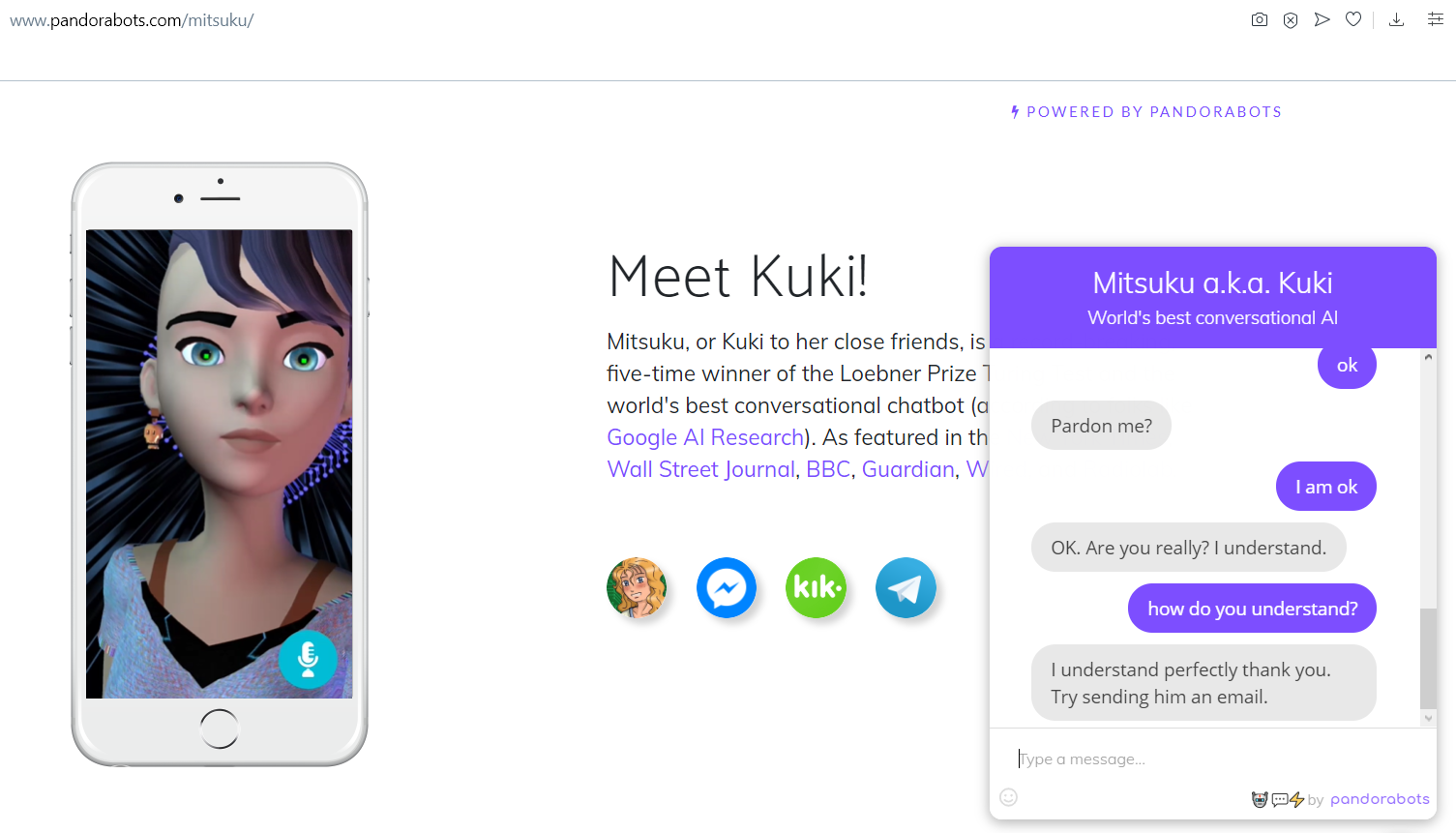
Mitsuku thinks I’ve got man trouble I think
Oh no, perhaps it’s work trouble…
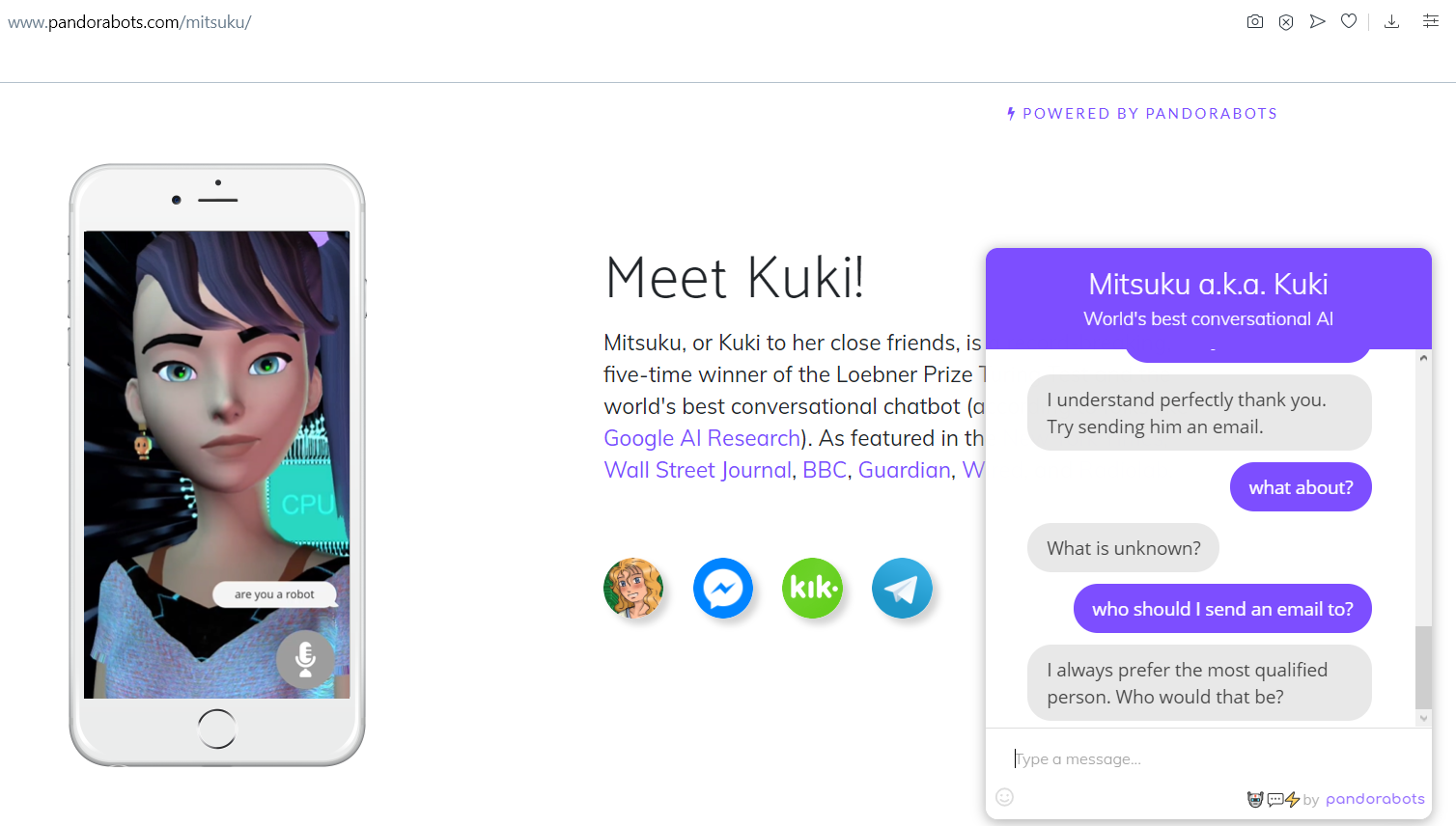
I think she’s stirring
Ok, enough of this! I suppose the educational use would be for answering frequently asked questions and directing students with links to resources.
Botsify
Botsify looks like it could do all that and more, being specifically designed as a chat bot for education:
AutoCharts Bot
This one might be my favourite bot ever – I’m glad I had another go! It makes really strange charts and posts them on Twitter:
I don’t know what you could use this for, but I thought it was funny.
TinyCareBot
TinyCareBot is really quite well meaning and sweet, tweeting self care tips. It’s very coronavirus focused at the moment, but I think something like this could be a nice gesture for welcoming students to a MOOC:
FavThingsBot
And finally, FavThingsBot has done something naughty:
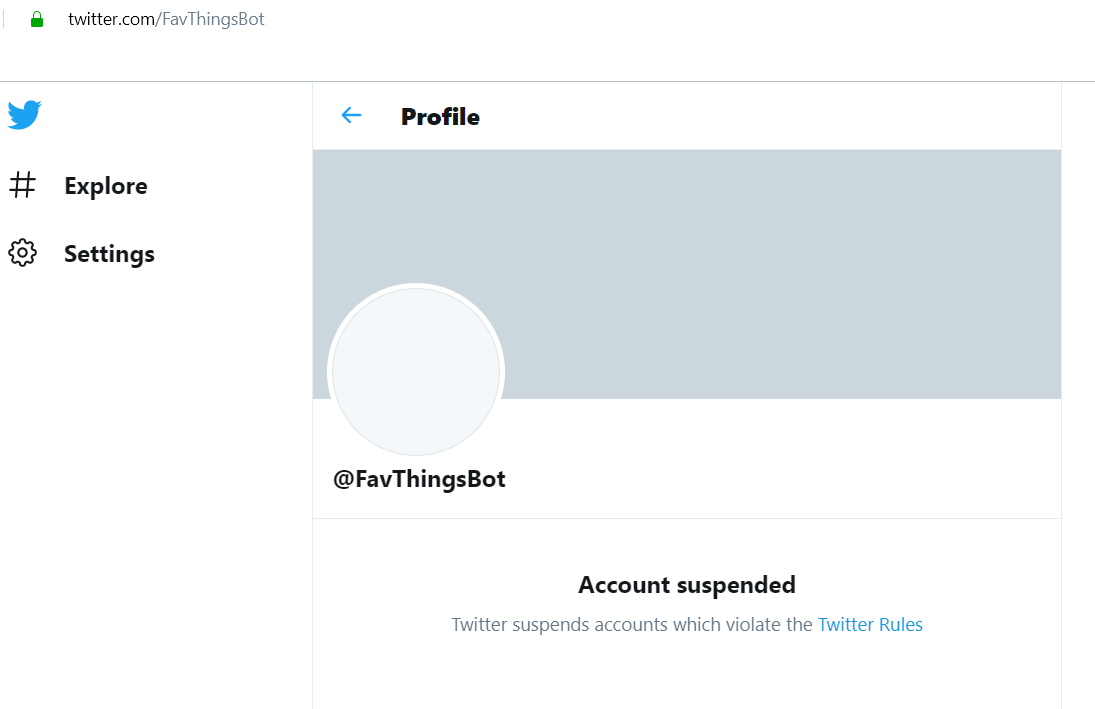
Account suspended… I wonder what went wrong
My fellow students had some interesting ideas on the course Padlet:
This was my favourite suggestion that they came up with:
A bot that only asks questions anonymously for students who might otherwise be embarrassed to ask them. This would be helpful for those students a bit too shy to participate on the discussion board.
I like how that is an idea that comes from human empathy and emotional intelligence, and uses an automated tool to prevent vulnerability and the need for that empathy being conspicuous.
Summary
This has been a fascinating introduction to some uses of artificial intelligence and particularly bots as tools to complement the human teacher in education. I’ve really enjoyed this section of the course!
Links
- Padlet: An Edinburgh Model: The Teacher Function
- Bayne, S. (2015). Teacherbot: interventions in automated teaching. Teaching in Higher Education, 20(4), 455-467.
- Teacherbot (2015). https://www.de.ed.ac.uk/project/teacherbot-interventions-automated-teaching.
- Ask teacherbot: are robots the answer?
- #edcmooc hashtag on Twitter
- Children’s Thoughts on Teaching Automation
- Introducing censusAmericans, A Twitter Bot For America
(Woodcut illustration (teacher and students) used by Franz Behem of Mainz. Public domain, via Flickr.)
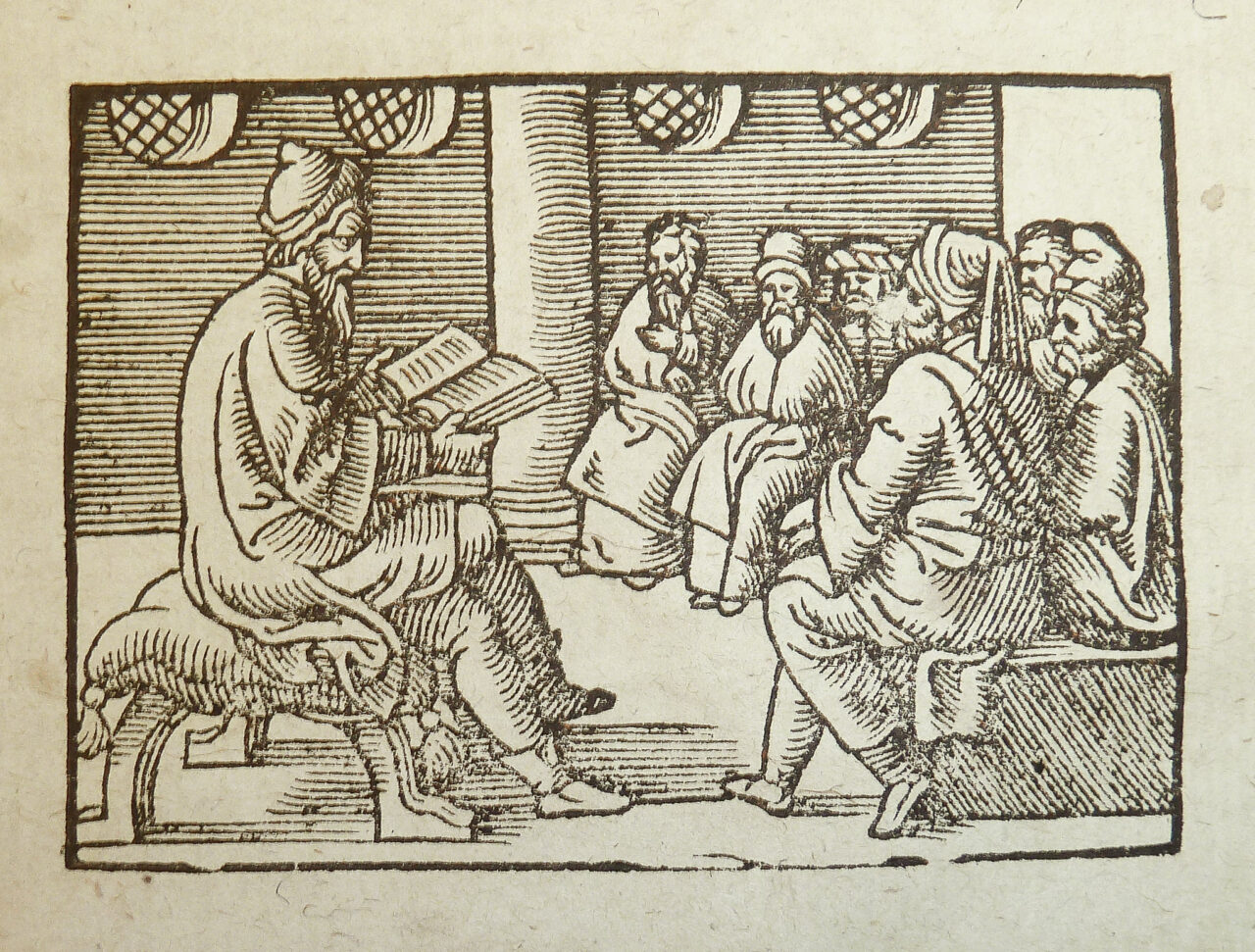

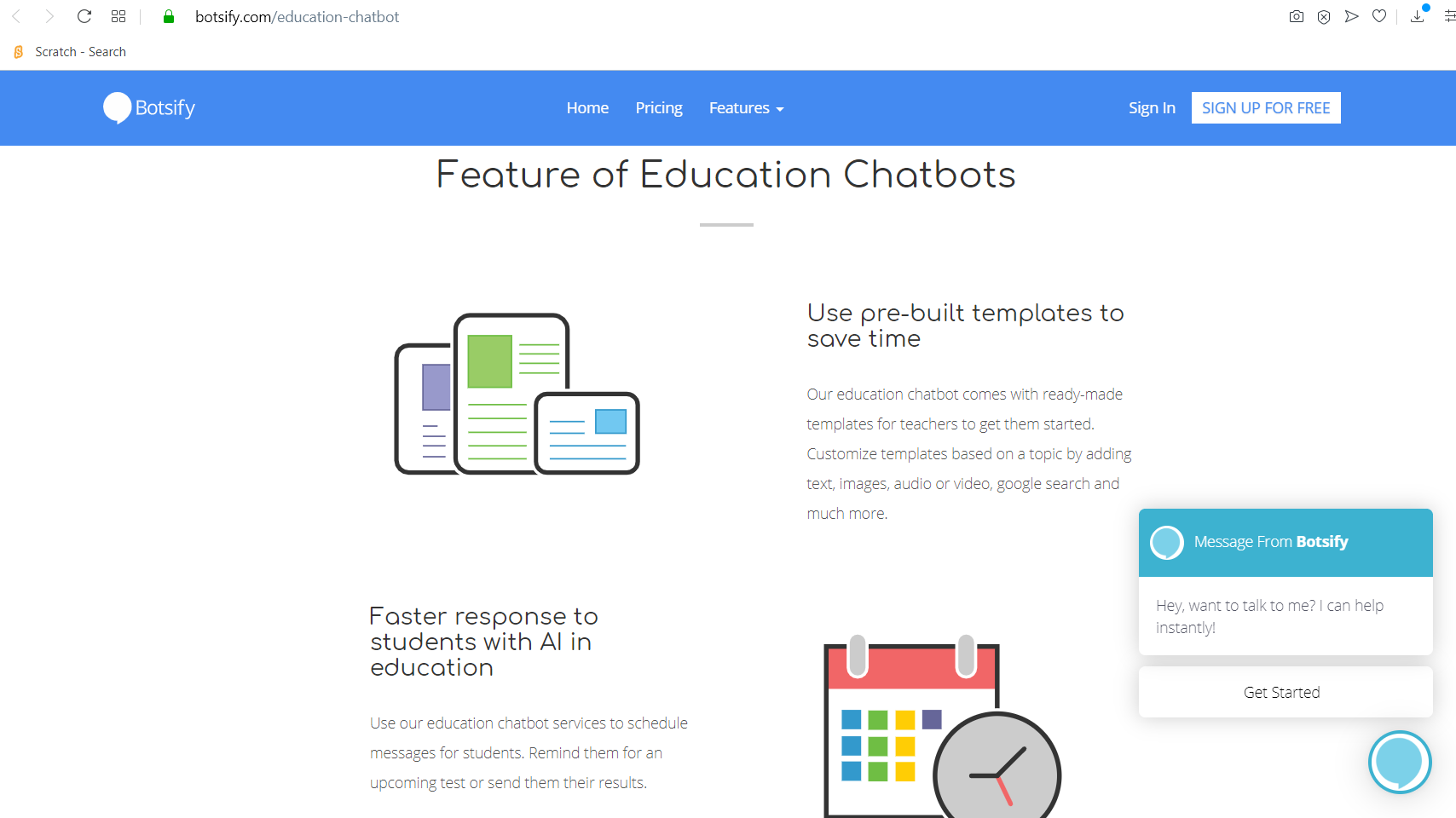
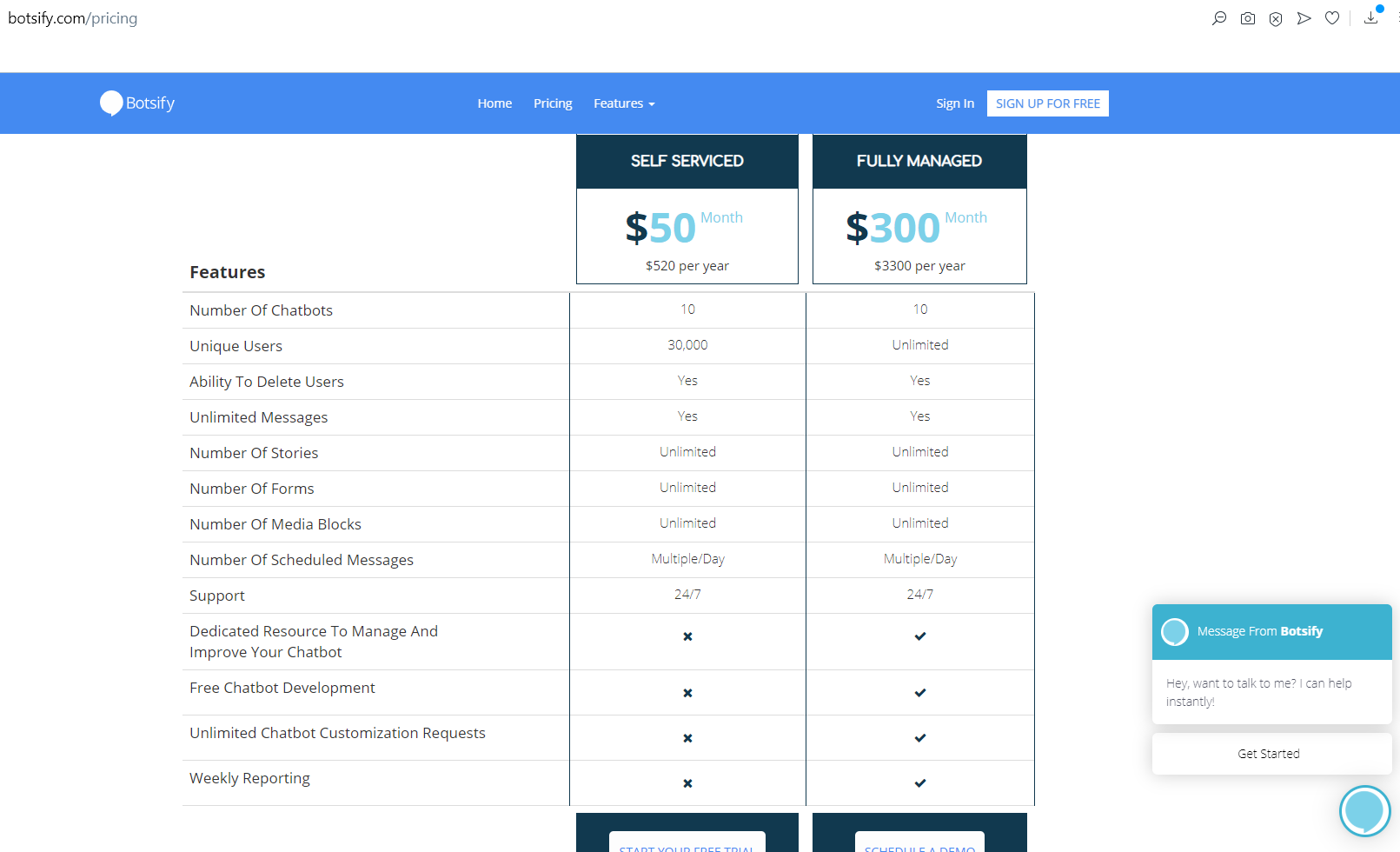
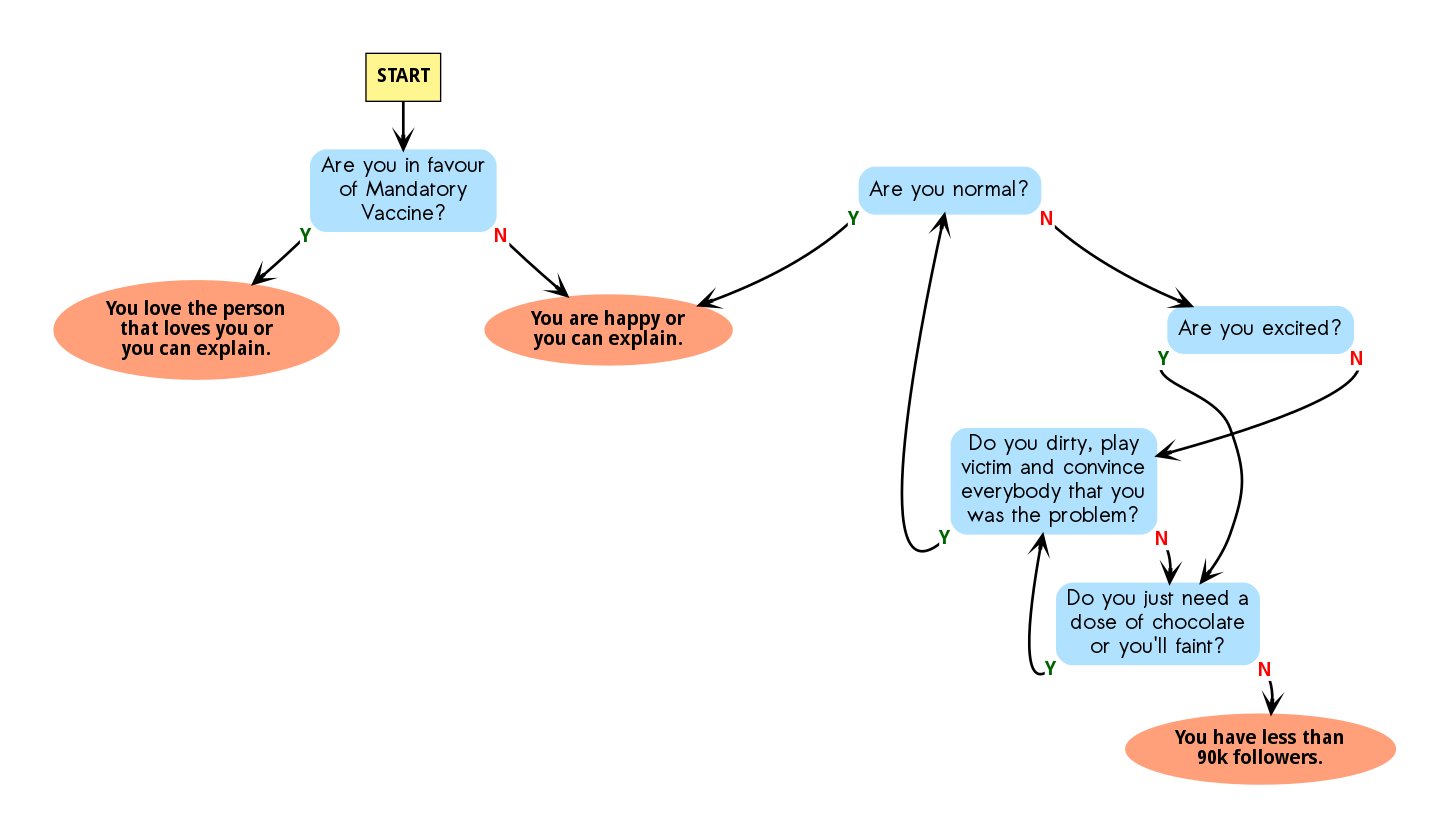
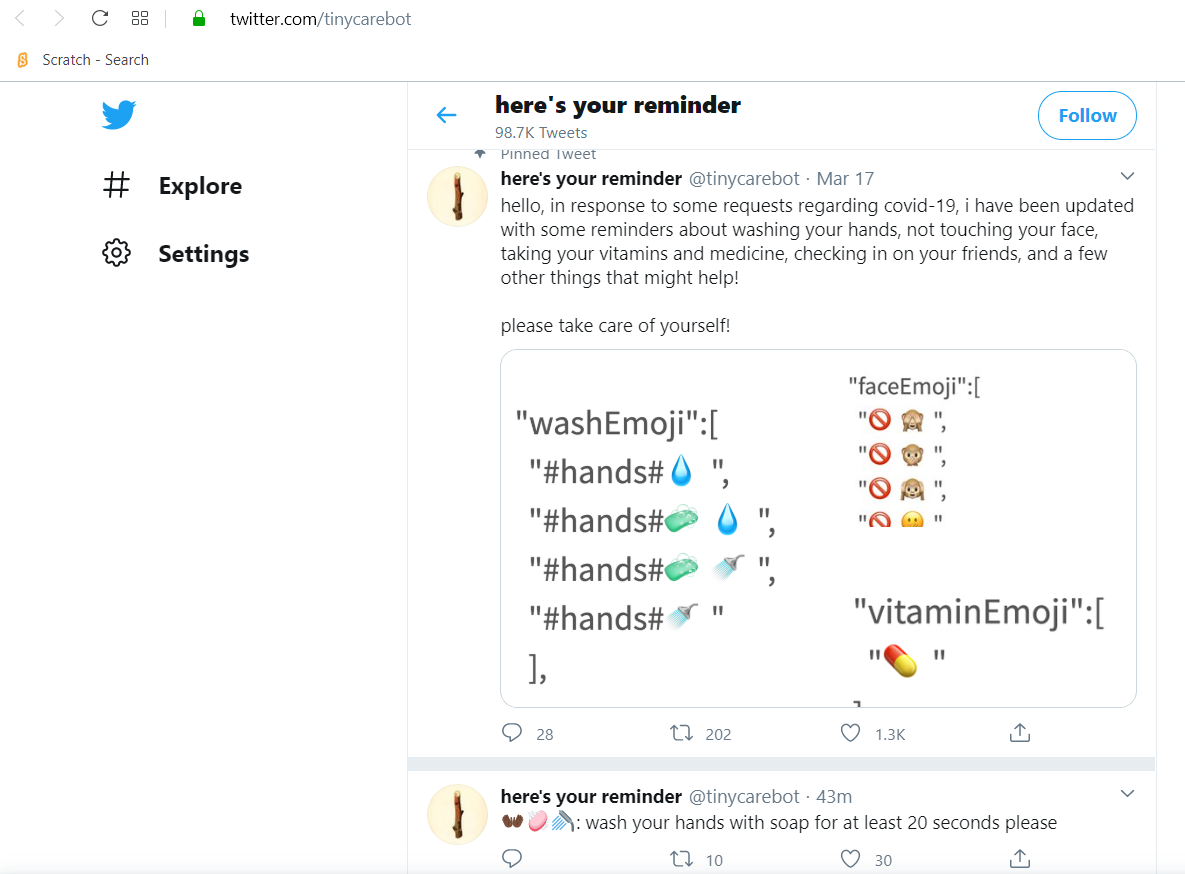
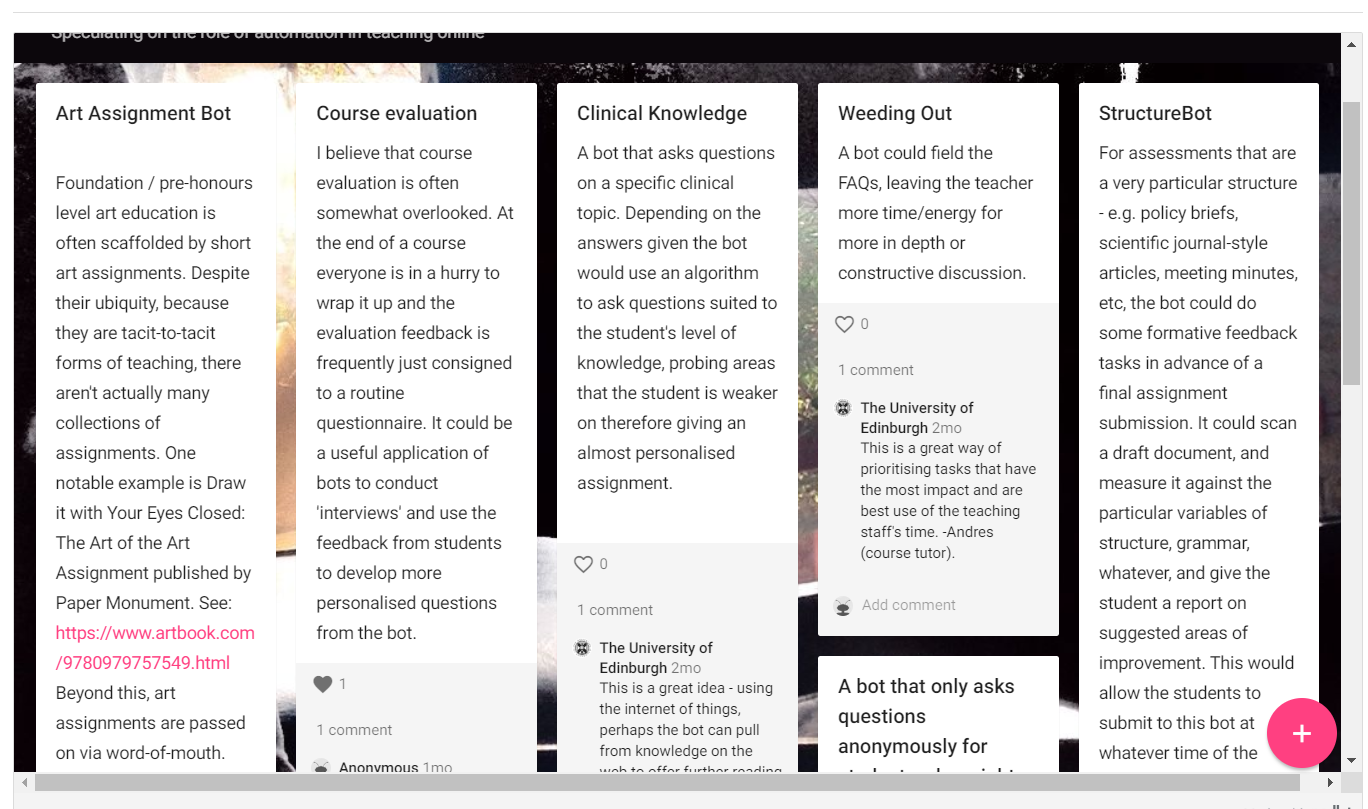


Leave a Reply